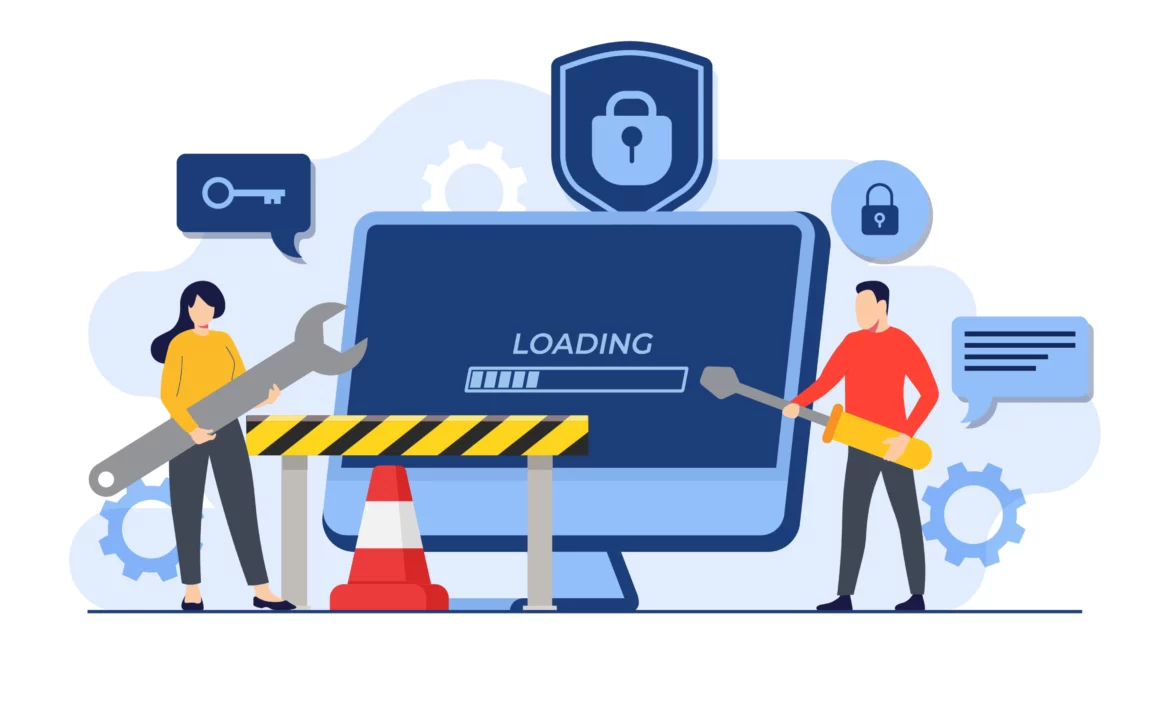Enhancing efficiency and customer satisfaction: The power of Helpdesk Support Services
Nowadays, businesses, irrespective of their size, heavily rely on technology to streamline operations and meet customer demands. However, along with technological advancements, organizations face challenges in managing complex systems, troubleshooting issues, and effectively addressing customer queries. This is where helpdesk support services come into play, providing valuable assistance and ensuring a seamless customer experience.
Helpdesk support encompasses a comprehensive customer service approach that offers technical assistance, issue resolution, and general support to users of specific products, services, or technologies. Helpdesk support services are available through various channels such as phone, email, live chat, or self-service portals.
Key Benefits of Helpdesk Support Services
Prompt Issue Resolution:
A primary advantage of helpdesk support services is the ability to promptly resolve technical issues. Whenever customers encounter problems or have questions, they can reach out to the helpdesk, where trained technicians provide immediate assistance, minimizing downtime and frustration. Swift issue resolution not only increases customer satisfaction but also enables businesses to maintain uninterrupted operations.
24/7 Availability:
Businesses need to provide support round the clock in this modern and connected era. Helpdesk support services often provide 24/7 availability. As a result, customers are provided with support round the clock, regardless of time zones or geographical locations. This accessibility builds trust and demonstrates a commitment to customer care.
Multichannel Support:
Helpdesk support services cater to customers’ preferred communication channels. Whether it’s phone calls, emails, live chat, or self-service portals, customers can choose the most convenient method to seek assistance. This flexibility helps businesses accommodate diverse customer preferences and ensures a personalized experience.
Knowledge Management:
Helpdesk support services often leverage robust knowledge management systems to store information about common issues, troubleshooting steps, and best practices. This knowledge base allows support agents to access relevant information quickly, leading to faster resolutions and improved first-call resolution rates. In addition, knowledge management systems allow self-service options, which enables customers to find solutions independently.
Customer Satisfaction and Loyalty:
An efficient helpdesk support service significantly impacts customer satisfaction levels. When customers receive rapid and efficient assistance, their gloabal experience improves, leading to higher satisfaction and increased loyalty. Satisfied customers are more likely to become brand advocates, positively influencing business reputation and customer acquisition.
Best Practices for Helpdesk Support Services
To maximize the benefits of helpdesk support services, businesses should consider implementing the following best practices:
Training and Continuous Development:
Investing in comprehensive training programs for support agents is crucial. Technicians must be equipped with up-to-date knowledge, problem-solving skills, and effective communication techniques to provide top-notch support. Regular training and skill development sessions ensure that the helpdesk team stays ahead of emerging technologies and customer expectations.
Metrics and Performance Monitoring:
Monitoring key performance indicators (KPIs) such as response time, resolution time, and customer satisfaction ratings is critical for the measurement of efficiency of helpdesk support services. Analyzing these metrics helps identify areas for improvement, optimize workflows, and enhance overall performance.
Feedback and Continuous Improvement:
Actively seeking feedback from customers about their support experience can provide valuable insights for ongoing improvements. Regularly collecting feedback and conducting surveys enable businesses to identify patterns, address recurring issues, and refine their support processes accordingly.
Helpdesk support services play a crucial role in ensuring efficient issue resolution and maintaining high levels of customer satisfaction. By offering prompt assistance, utilizing various communication channels, and implementing best practices, businesses can enhance their overall support experience, build customer loyalty, and strengthen their brand reputation. As technology continues to evolve, investing in robust helpdesk support services becomes increasingly essential for businesses aiming to stay ahead in the competitive landscape.
Top 3 Helpdesk Software Solutions
In the modern business environment, delivering exceptional customer support is crucial for maintaining satisfaction and building lasting relationships. Helpdesk software solutions have become essential tools for businesses, enabling them to efficiently manage customer inquiries, resolve issues, and provide seamless support experiences. These are the three top helpdesk software solutions that can streamline your support operations and elevate your customer service.
Zendesk:
Zendesk is a renowned name in the helpdesk software space, offering a comprehensive suite of customer service tools. Its intuitive interface and robust features make it a popular choice for businesses of all sizes.
Key Features:
Ticketing System: Zendesk’s ticketing system organizes customer inquiries, ensuring efficient assignment, tracking, and resolution. Agents can collaborate, view customer history, and provide timely responses.
- Multichannel Support: Zendesk seamlessly integrates with various communication channels, such as email, live chat, phone, and social media. This allows businesses to provide consistent support across multiple platforms.
- Knowledge Base: Zendesk’s knowledge base enables the creation of self-service articles and FAQs, empowering customers to find answers independently.
- Automation and AI: Zendesk leverages automation and AI features like automated ticket routing, chatbots, and sentiment analysis to enhance efficiency and improve response times.
- Reporting and Analytics: Zendesk provides comprehensive reporting and analytics capabilities, enabling businesses to track metrics, measure agent performance, and optimize processes.
Freshdesk:
Freshdesk is a user-friendly helpdesk software solution designed to simplify customer support operations and enhance team collaboration. It offers features tailored to meet the evolving needs of modern businesses.
Key Features:
Ticket Management: Freshdesk’s ticket management system enables efficient categorization, assignment, and prioritization of customer inquiries. Agents can collaborate, add private notes, and track ticket progress.
Omnichannel Support: Freshdesk seamlessly integrates with multiple communication channels, including email, phone, live chat, social media, and self-service portals, centralizing customer interactions.
- Knowledge Base and Community Forums: Freshdesk facilitates the creation of knowledge bases and community forums, empowering customers to find self-help resources and engage with other users.
- SLA Management: Freshdesk allows businesses to set and manage service level agreements (SLAs) for timely response and resolution. SLA tracking and reminders help maintain service quality.
- Automation and AI-Powered Chatbots: Freshdesk’s automation capabilities streamline tasks, while AI-powered chatbots provide instant responses to common queries, reducing agent workload and response times.
ServiceNow:
ServiceNow is a powerful helpdesk software solution that combines IT service management (ITSM) and customer service management (CSM) functionalities. It offers enterprise-grade features and scalability.
Key Features:
Incident and Problem Management: ServiceNow provides robust incident and problem management capabilities for efficient issue tracking and resolution. Agents can collaborate, escalate tickets, and leverage automation.
Self-Service Portal: ServiceNow’s self-service portal empowers customers to find information, submit requests, and track inquiries. It offers a user-friendly interface and a knowledge base for self-help options.
- Workflow Automation: ServiceNow automates tasks, approvals, and notifications, streamlining support processes and ensuring consistent service delivery.
- Performance Analytics: ServiceNow offers advanced analytics and reporting features to monitor key performance indicators (KPIs) and gain insights for improvement.
- Integration and Customization: ServiceNow’s flexible architecture allows seamless integration with other business systems, creating a unified support environment. It delivers customization solutions to tailor the software to unique business needs.
Implementing a robust helpdesk software solution is vital for businesses aiming to provide exceptional customer support and streamline their operations. Zendesk, Freshdesk, and ServiceNow are top-tier solutions that offer a range of features to enhance efficiency, improve customer satisfaction, and drive business success. By evaluating your specific requirements and selecting the right helpdesk software that aligns with your organization’s needs, you can deliver outstanding support experiences and build strong customer relationships.













